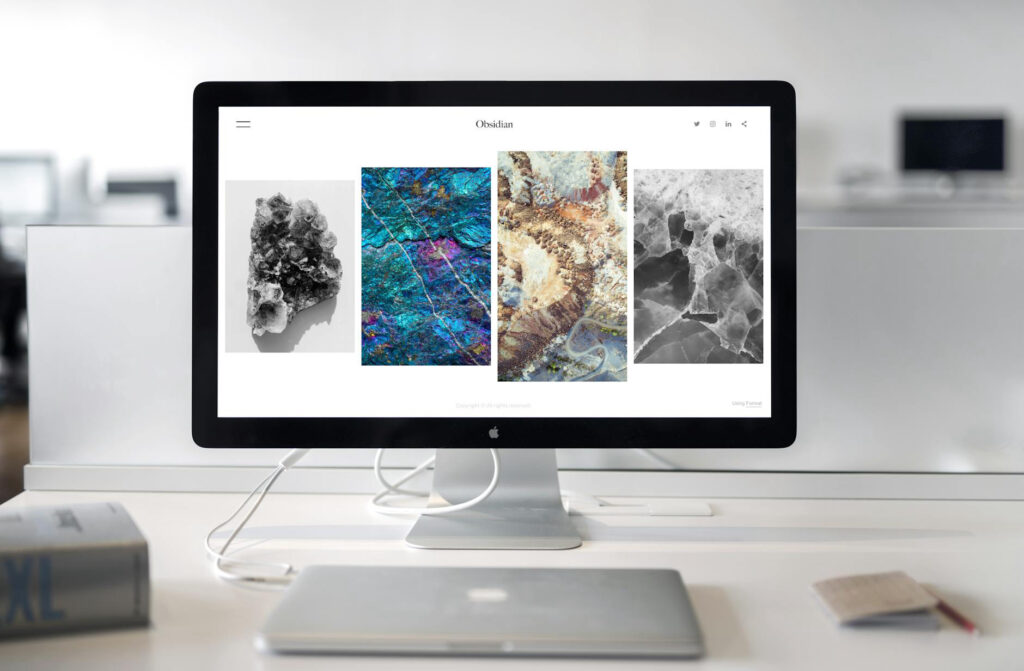Website Tamplates: When and When Not To Use Them
While pre-made website templates offer convenience and cost-efficiency, they fall short in delivering the unique, tailored experience that modern businesses require to stand out. Here, we explore why a distinct, custom website design is crucial and how it can make a significant difference for your brand.

Uniqueness and Brand Identity
Every business has a unique story to tell, and a custom website design allows you to convey this narrative effectively. Pre-made templates, no matter how versatile, are built for mass appeal and lack the flexibility to incorporate your brand’s specific elements seamlessly. A distinct website design ensures that your brand’s colors, fonts, imagery, and overall aesthetic are consistently represented, creating a cohesive and memorable experience for your users.
Consider a luxury brand, which specializes in high-end pruduct. For such a brand, a generic template would undermine the sophistication and exclusivity they aim to project. Instead, a custom web design can incorporate elegant visuals, intuitive navigation, and engaging content that resonates with their target audience, reinforcing their brand identity and market position.
User Experience and Functionality
A distinct website design is not just about looks; it’s about delivering a superior user experience (UX). Custom websites are built with your specific audience in mind, considering their needs, preferences, and behaviors. This user-centric approach leads to a more intuitive and satisfying experience, which is often missing in pre-made templates.
Custom designs allow for the integration of advanced functionalities tailored to your business operations. For instance, an e-commerce site may require personalized product recommendations, streamlined checkout processes, and responsive design to cater to mobile shoppers. These features, when thoughtfully designed, can significantly enhance user engagement and conversion rates.
SEO and Performance Optimization
Search Engine Optimization (SEO) is critical for online visibility, and custom website designs offer a significant advantage in this area. Pre-made templates often come with bloated code and unnecessary features that can slow down your site and negatively impact SEO. On the other hand, a custom-built website is optimized for performance, ensuring faster load times and better user experience, which are essential ranking factors for search engines.
Moreover, a custom design allows for more effective implementation of SEO best practices, such as clean URL structures, optimized meta tags, and schema markup. These elements are crucial for improving your website’s search engine ranking and driving organic traffic.
Scalability and Flexibility
As your business grows, so do your website needs. Custom website designs, with functional UI, offer the scalability and flexibility to accommodate new features, pages, and integrations without compromising the overall design and functionality. Pre-made templates, in contrast, can be restrictive and may require significant modifications or even a complete overhaul to meet evolving requirements.
A custom design provides the foundation for future-proofing your brand and setting design language that lasts. One that outlasted any trends. Whether it’s integrating new technologies, expanding your content strategy, or enhancing security features, a bespoke design can adapt and grow with your business. Growing your design system with it.
Security and Support
Security is a paramount concern for any online platform. Custom websites can be built with robust security measures tailored to your specific needs, reducing the risk of vulnerabilities often associated with widely-used templates. This is particularly important for websites handling sensitive information, such as e-commerce sites or platforms offering online services.
Additionally, with a custom website, you have access to dedicated support from the development team. This ensures timely updates, bug fixes, and enhancements, maintaining the website’s performance and security over time.
The Symbiosis of Form and Function in Website Design
A website must not only look appealing but also serve its intended purpose effectively. When form and function are out of sync, it creates friction, frustrating users and diminishing the overall experience. Here, we delve into the critical aspects of form and function, and why their harmonious integration is essential for a successful website.
The Importance of Form: Crafting Visual Appeal
Form encompasses the visual elements of a website—its layout, colors, typography, imagery, and overall aesthetic. A well-designed form captivates visitors, making a powerful first impression and fostering an emotional connection with the brand. However, form without function is merely decorative and fails to deliver a seamless user experience.
- Visual Consistency and Brand Identity A cohesive visual identity is crucial for brand recognition and trust. Consistent use of colors, fonts, and imagery reinforces the brand’s message and values. For instance, a luxury brand should exude elegance and sophistication through its design elements, while a tech company might opt for a sleek, modern look.
- Engaging User Interface (UI) An engaging UI guides users intuitively through the website. Thoughtful placement of elements, clear call-to-action buttons, and well-organized content contribute to a pleasant browsing experience. A visually appealing site, that uses UI kits that are consistent, encourages users to explore further, increasing the chances of conversion.
- Accessibility and Inclusivity Aesthetic design should not compromise accessibility. Ensuring that the website is usable for people with disabilities—through proper contrast ratios, readable fonts, and accessible navigation—broadens the audience and demonstrates inclusivity.
The Role of Function: Ensuring Practical Usability
Function refers to the usability and performance of the website—how well it works and serves the user’s needs. A functional website facilitates easy navigation, quick load times, and straightforward interactions. However, function without form can be unappealing and fail to engage users.
- User-Centric Design Functionality should always prioritize the user’s journey. Understanding the target audience and designing with their needs in mind ensures that the website is intuitive and easy to navigate. This involves clear menus, logical content organization, and efficient pathways to critical information.
- Performance Optimization Speed is a critical factor in user satisfaction. A functional website is optimized for performance, ensuring quick load times and smooth interactions. This not only improves the user experience but also positively impacts SEO rankings.
- Responsive Design With the diverse array of devices available today, a website must function seamlessly across desktops, tablets, and smartphones. Responsive design ensures that the website adapts to various screen sizes and orientations, providing a consistent experience for all users.
Form and Function in Harmony
To create an effective website, form and function must work in tandem. Beautiful design without functionality can frustrate users, while a highly functional site with poor design can fail to engage them. Here’s how they can be integrated effectively:
- Thoughtful UI/UX Integration UI design focuses on the visual experience, while UX design emphasizes usability. Combining these disciplines ensures that the website is both attractive and easy to use. For example, an e-commerce site should not only have an appealing product display but also a streamlined checkout process.
- Iterative Design Process An iterative design process involves continuous testing and refinement based on user feedback. This approach ensures that both form and function evolve to meet user needs and preferences. Regular updates and improvements keep the website relevant and effective.
- Collaborative Approach Collaboration between designers and developers is crucial. Designers focus on the visual and interactive aspects, while developers ensure that these elements are implemented efficiently and functionally. A collaborative approach ensures that the final product is cohesive and harmonious.
Conclusion
The fusion of form and function, that can be only achieved with custom Web design and development, is the cornerstone of effective site. One that reflects brands nature and purpose. A visually solid website must also offer practical usability, just as a highly functional site must engage users through appealing design. When form and function are aligned, they create a seamless and enjoyable user experience that drives engagement and achieves business goals.
Related Articles
Creating Better Websites
August 18, 2024
The Science of UX: How Humans Interact with Websites
July 28, 2024



